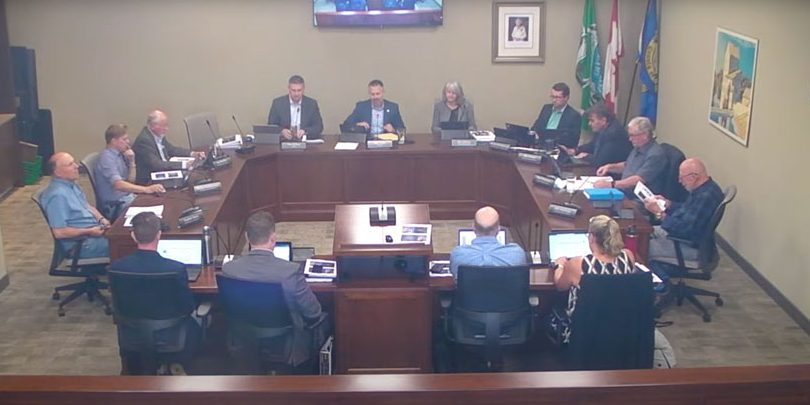ELORA – While many municipalities are scrambling to meet new provincial legislation requiring them to have asset management plans in place by July 1, Centre Wellington is ahead of the curve.
The township’s chief administrative officer Dan Wilson and treasurer Adam McNabb presented the 2022 asset management plan to council at a special council meeting on June 15.
It was unanimously approved.
The plan, completed in-house by the executive team, provides a way to manage the township’s assets – roads, bridges, buildings, vehicles and equipment, water and wastewater assets and land improvements – which total $1 billion.
The township has been updating asset management plans since 2013, but under the new legislation, everything dovetails around the asset management plan, including levels of service, managing growth, managing risk, how to fund maintenance and repairs and, most importantly, annual operating and capital budgets.
Wilson said levels of service should drive funding, and funding requirements should drive budgets – not the other way around.
“There has to be a trade-off and the trade-off is cost,” he said, adding any new service needs a cost-benefit and risk analysis before being implemented and it also needs to fit into the whole asset management plan.
The plan includes assessments of how the township will fund changes in service levels – some of which are dictated by the province – from current levels to what is proposed.
Some of the township’s assets are funded from fees – such as water and wastewater.
Fees collected in excess of actual cost go into a reserve and are used to fund capital repairs and expansions. The new digester roof on the wastewater treatment plant in Fergus was funded from the reserve fund, for example.
The township regularly reviews its fee structures, often with the assistance of consultants, and the reviews usually encompass forecasted growth, the current state of assets, and anticipated repairs and new facilities required.
Wilson said the township often receives grants, but the asset management plan assumes receiving only the most stable of them – namely the Ontario Community Infrastructure Fund (OCIF) of $1.73 million a year, and Ontario Lottery and Gaming (OLG) funding of $2.2 million.
The rest of the assets – $751 million worth – are funded from property taxes and 70% of those are roads while 16% are bridges and culverts.
“Bridges and culverts are at 74% of optimal [condition],” Wilson said, while the remaining tax supported assets are at 43% optimal.
That’s largely because the township instituted a bridges and culverts levy in 2015, allowing the township to move forward with repairs and replacements because of this dedicated fund.
Wilson said an additional dedicated capital investment of 2% each year for roads would mean the township will be at 91% optimal in 40 years.
This is the course staff has recommended.
“Asset management will play a role in almost everything we do in the future,” Wilson stated in a June 16 press release.
“Therefore working these practices into existing corporate, departmental, and staff processes is not only efficient, but extremely effective.”
At the meeting Mayor Kelly Linton called the asset management plan a “foundational document” that will keep the township on solid financial footing and its assets in good repair.
“It’s good to do and something we had to do,” he said.
“Centre Wellington is known for our asset management, which is remarkable for a small municipality.”
While council approved the asset management plan, it will be up to the next council to decide on the 2% road levy.
That decision will be made during 2023 budget deliberations.




